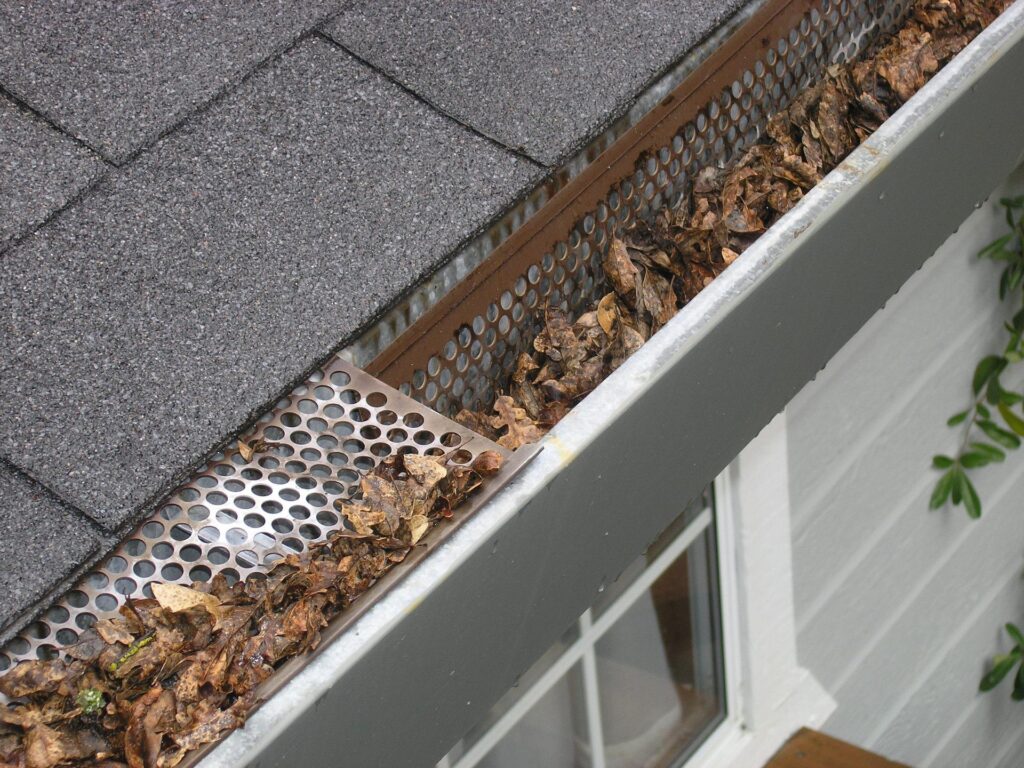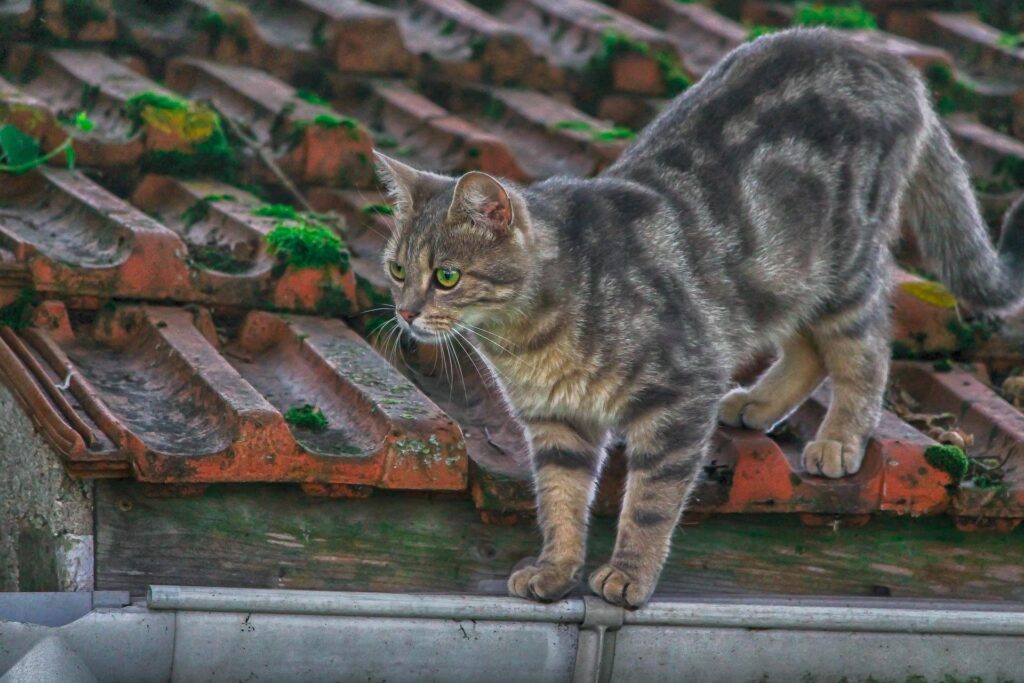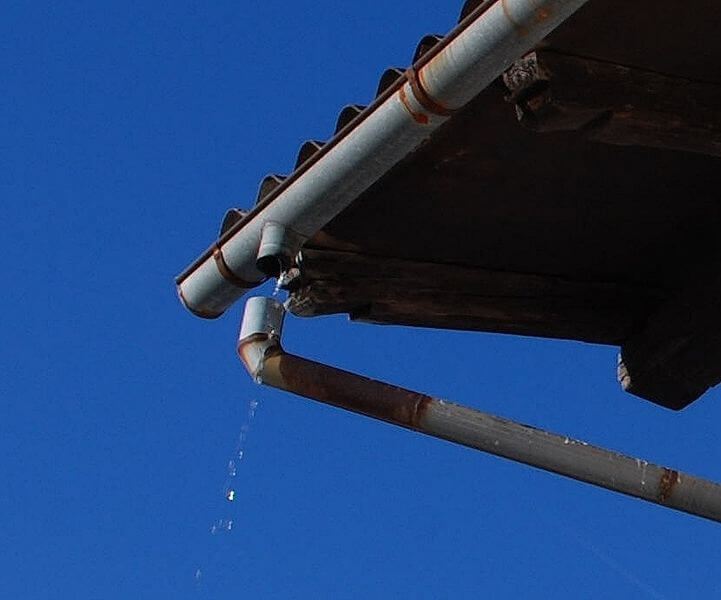
There are various types of Edmonton gutter guards that you can install in your home. There are those types of gutter guards that do not require tools and experience to install. There are also types that are easy to install, but you cannot DIY; therefore, you need a professional.
The types of gutter guards that are easy to install include screen, micro-mesh, mesh, brush, and foam. These types of gutter guards are DIY-friendly, and therefore you can easily install them in your home. Of all the types of gutter guards, foam, screen, and mesh are among the easiest to install.
If installing gutter guards feels like an overwhelming task, let us know how we can help!
587-405-3224
Call Us!Types of Edmonton Gutter Guards
Gutter guards are available in various types. Some of the common types of gutter guards include: –
Screen

One of the most popular gutter guard styles is this one. A plastic or wire grid may be present in screen gutter guards, which helps to prevent leaves and other big debris from entering the gutter trough. The majority of homes have gutter guards of this kind.
Installing screen gutter guards is very simple. You simply need to lift the lowest row of your home’s roof shingles to install this gutter guard. The edges of this particular gutter guard are then slid under the shingles along the whole length of your home’s gutter. It is important that you slide the gutter guard’s edges underneath the shingles since the weight of the shingles keeps the gutter guard in place.
This gutter guard is simple to install, but strong winds can quickly blow it off or dislodge it. Furthermore, this gutter guard may be removed from under shingles by falling trees. This gutter guard’s installation requires removing the lower roof of your home, which could void some roof warranties.
Micro-mesh

This type of gutter guard prevents items like twigs, pine needles, and other debris while allowing water to flow through tiny holes. The installation of this gutter guard in your home will require one of three straightforward techniques.
The edge of this gutter guard is slid under the first row of shingles on your roof using one of three straightforward installation techniques. This guard can also be attached directly to the gutter at the top of your roof. The final technique involves fastening anything to the fascia, a board that is mounted close to your roofline.
The holes in this gutter guard are a little bit smaller than those in the screen gutter guard, which helps to block even small debris like blowing sand as the rainwater passes through. Additionally, this type of guard is made from a variety of materials, from affordable plastic to sturdy stainless steel.
The drawback of this gutter guard is that you will need to periodically clean it with a hose sprayer and scrub brush to remove any ultrafine material that might be clogging the mesh holes.
Mesh
Although these gutter guards are a little more expensive and difficult to install than screen guards. Less debris can get stuck in the gutters because of the holes in them, which are frequently smaller. Some mesh gutter guard variations, which are fragile, are easily torn or destroyed by extreme weather conditions.
Reverse Curve

This is also another type of gutter guard that you can install onto the roof of your house. Unless you are a professional, installing this type of guard on the gutter on your roof is not a walk in the park. Additionally, these types of gutter guards are made using molded plastic and lightweight metal.
This gutter guard forces water to flow over the gutter and around a downward curve before falling into the gutter below, in contrast to other gutter guards that permit water to flow through the gutter. Leaves and other debris from your roof will be kept out of the gutter. This type of gutter guard is best for you if your yard has numerous trees.
Reverse Curve is more expensive than mesh and screen gutter guards. Additionally, installing it is not a DIY project. You must make sure to attach this kind of gutter guard to your roof’s fascia at the proper angle when installing it. Rainwater that is installed at the incorrect angle will flow over the edger rather than into the gutter. Furthermore, because this sort of guard is built over your existing gutter, it may look like a full gutter cover when viewed from the ground.
Brush

This type of gutter guard is a large pipe cleaner that rests inside the gutter. They help by preventing large objects from falling into the gutter and clogging it up. Installing this type of gutter guard is also easy, and it is affordable. You only need to cut the brush to a proper length and then slide it into the gutter of your roof. Brush-style gutter guards are DIY-friendly.
The thick metal wire core of brush-style gutter guards is surrounded by polypropylene bristles that extend outward. You will not need any screws or connections to your roof’s gutters to install this gutter guard. This brush-style gutter guard’s thick metal wire core is flexible, so it can easily be bent to fit around corners or any other unusually shaped gutter system you might have in your house.
The disadvantage of this gutter guard is that smaller debris, such as pine needles, can easily get stuck in its bristles, necessitating its removal in order to shake and clean it.
Foam
This is another type of gutter that is very easy to install. This gutter guard is just a triangular block of foam, and it is DIY-friendly. This type of gutter guard works by one side facing up to the top of the gutter in your roof to prevent the debris from entering. The other side lies diagonally in the gutter to ensure rainwater and small debris flow through the drainage system, while the last part lies to the back of the gutter.
These gutter guards are a great option for do-it-yourselfers because they’re affordable and simple to install. There is less chance of damage or leaks because the foam can be cut to the right length, and the guards do not need nails or screws to stay in place.
The disadvantage of using these gutter guards is that if you install them during a period of heavy precipitation, the foam could easily become saturated, which could result in your gutter overflowing.
Surface Tension Edmonton Gutter Guards

The most resilient gutter guards on the list are surface tension guards, but they are also frequently the most expensive. They are built to keep out larger debris while withstanding windstorms, snow, ice, and branches. When you install this guard properly, surface tension gutter guards have the advantage of lasting a long time and requiring no maintenance.
Consider When Choosing the Easiest Gutter Guard to Install in Your House
There are various things that you should consider before purchasing the easiest gutter guard to install in your home. Some of the factors include: –
Material
Edmonton Gutter guards are made using various materials depending on the type. The materials used in making the gutter guards also determine their quality and durability. Some of the materials used in making easiest to install gutter guards are:

- Stainless steel – mesh, micro-mesh, screen, and reverse curve types of gutter guards are commonly made using this material. This material is durable and, therefore, long-lasting. Additionally, you will not have to worry about rust, corrosion, or other harsh outdoor elements like extremely high or low temperatures if you have a gutter guard made of this material. However, the cost of gutter guards made of this material is high.
- Copper – This material has a constant resistance to rusting and corrosion. Copper gutter guards are never simple to come by. This is because there aren’t many companies that produce them. Gutter guards of the screen and micro-mesh variety can be made of copper. Gutter guards made of this material are more durable and expensive than those made of stainless steel. Gutter guards made of copper are a bit pricey.
- Aluminum – Gutter guards made of aluminum frequently come in the forms of screen and micro-mesh. Although they are lightweight, they are not as durable as copper or stainless steel. If your home is not close to branches, twigs, pine needles, or other hard objects since they might easily pierce it, you can install gutter guards made of this material.
- Plastics – The two most popular Edmonton gutter guards made from this material are brush-style and reverse curve. However, because brush guards have an aluminum or stainless steel core, they are not entirely made of plastic. Additionally, polypropylene bristles are included in bush-style gutter guards. This material can readily break and expand despite being inexpensive and resistant to rust and corrosion.
- Foam – The only products manufactured from this substance are foam gutter guards. This substance stops debris from entering the gutter or traveling through this material and only allows water to pass through. This material is also affordable and strong. The possibility of mold growth is its lone drawback.
Size

It is advisable that you measure your gutter before purchasing a gutter guard for your house. Measuring your gutter involves climbing up on a secure ladder for you to get the correct width of your gutter. There are several widths for Edmonton gutter guards.
Consequently, taking the exact width measurement will guarantee that you acquire the proper dimension for your gutter. Guards can match the standard widths of gutters. The three available widths are 4, 5, and 6, with 5 being the most popular. To make sure the guard covers the gutter completely, you will also need to measure the length of the gutter. The proper size of your gutter can be determined by measuring it from the inside edge to the outer edge.
Visibility
It is best if the side of the gutter guard that is visible from the ground blends easily or highlights the existing aesthetic of your house. Gutter types such as reverse curve, screen, and micro-mesh are easily visible from the ground. However, foam and brush gutter guards are completely inserted into the gutter and therefore not visible from the ground.
The color of the gutter guard type that you choose to be able to complement and enhance your house aesthetics. In order to obtain a cohesive and attractive look for your house, you should match the color of the gutter guards to the color of your roof. Gutter guards are available in various colors, with white, black, and silver being the standard.
Professional vs. DIY installation
When your roof is anything higher than the first story, a professional installation is recommended. However, with one story roof, you can safely install the gutter guards yourself. However, when DIY, you will need to have a secure and appropriate ladder, and a spotter must be there.
Advantages of using gutter guards
- Keeping large debris out
Your gutters may become clogged with anything, including pine cones, pine needles, and huge leaves. Not only do these objects clog your gutter system’s water drainage, but they also begin to decay inside the gutter, which leads to longer-term problems.

- Deterring rodents and insects
There are certain insects and rodents that may make your gutter their home. When these parasites turn your gutter into their home, debris is likely to be there, and this may lead to water standing in your gutter. Where there is stagnant water in your gutter, it becomes a breeding ground for mosquitos and other insects. By installing gutter guards, any rodent and insect that may turn it into their home will be deterred.
- Better drainage
When you install gutter guards on your roof, there will be better rainwater drainage. Without gutter guards, your gutters are likely to get clogged. When your gutters get clogged, the rainwater is likely to flow over the gutters leading to a pool forming around the foundation of your house. The pool forming around the foundation in your house may cause certain issues over time.
- Less gutter maintenance/cleaning
Cleaning and maintaining your gutter involve climbing up a ladder. This can be hazardous since you may fall and get injured. Additionally, nobody enjoys cleaning gutters. With gutter guards installed, you will not have to clean it every now and then.
Conclusion
The easiest gutter guard to install in your home depends on your experience. However, gutter guard types such as screen, mesh, micro-mesh, foam, and brush are the easiest to install. There are no tools needed to install these types of Edmonton gutter guards. However, it is always advisable to check with us before installing gutter guards in your home. This will help you in the long term since they will help you determine the best gutter guard for your home. We at the Edmonton Eavestroughs provide top notch service at a great price. Let us know if you need any help. Ask us anything! 587-405-3224
Call Us!

